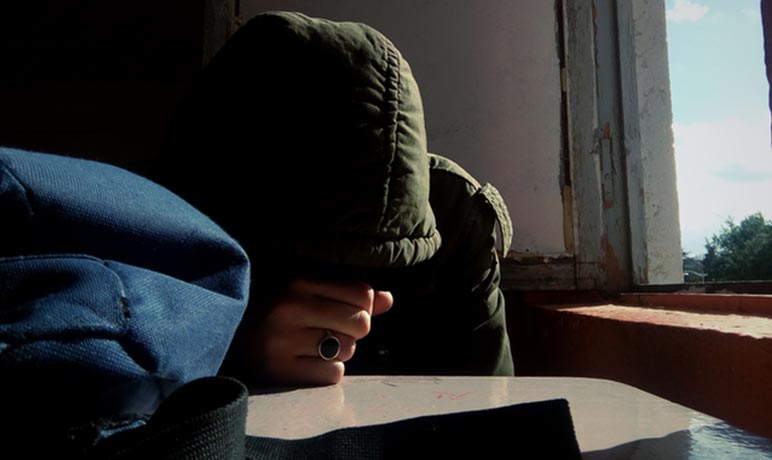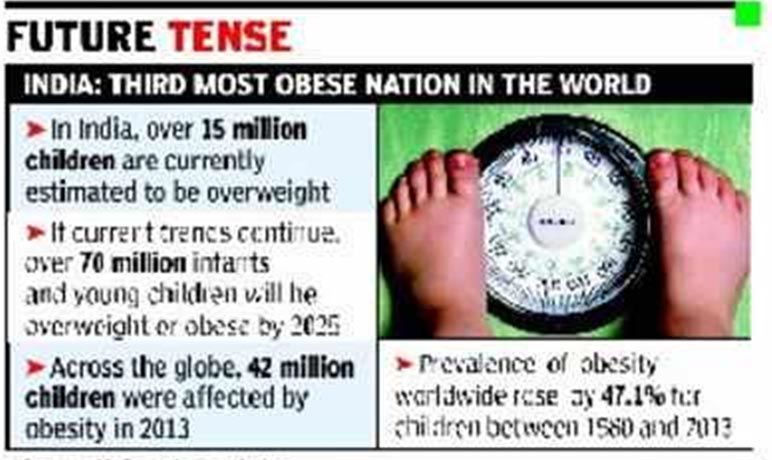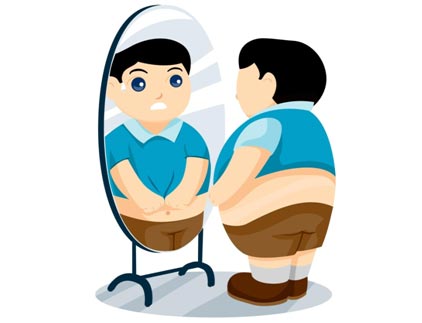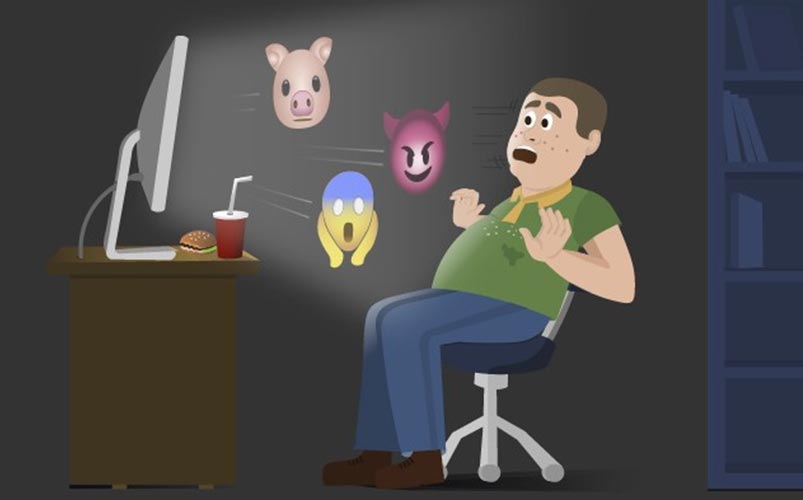Progress in technology means that no previous generation has ever seen problems as faced by todays adolescents.In fact, the average teen spends over nine hours each day using their electronic devices. Consequently, their social media habits and media consumption are changing the way they communicate, date, learn, sleep, exercise, and more. Here are the top 10 social problems teens struggle with every day.
Depression
One in 4 teenagers in India suffers from depression. And yet, we keep pretending this is not happening in our own homes and schools.Depression rates grew among adolescents, especially in girls, over the previous decade when about 8% of teens reported being depressed. Some researchers blame technology for the rise in mental health problems. For instance, spending too much time on electronic devices may be preventing young people from engaging in sports or peer activities that help ward off depression. They also experience new conditions like “fear of missing out” or FOMO, which further leads to feelings of loneliness and isolation.


https://www.jbcnschool.edu.in/blog/common-teenage-problems-solutions/
Bullying
According to the Department of Health and Human Services, about 20% of teens in the U.S. experienced bullying in 2017. One reason for this is the rise of social media use by teens, which has made bullying much more public and more pervasive. In fact, cyberbullying has replaced bullying as the common type of harassment that teens experience.One in three young people in 30 countries said they have been a victim of online bullying, with one in five reporting having skipped school due to cyberbullying and violence, in a new poll released by UNICEF and the UN Special Representative of the Secretary-General (SRSG) on Violence against Children.
Alarming facts about cyberbullying in Asian countries — a survey among 3000 students reveal 48.4% have had embarrassing videos of them posted online and 47.3% have been a victim of hate speech.Over 20,000 parents participated in a worldwide research about high-risk online platforms. 65% single out cyberbullying on social media as their biggest fear. Other common threats include text messaging (38%) and chat rooms (34%).
Percentage of parents throughout the world that report their child has been a victim of cyberbullying:has increased.It found that nearly one in five parents worldwide say their child has experienced cyberbullying at least once. The problem is particularly bad in India which had the highest rate of parents confirming instances of cyberbullying. A total of 37% of parents across India said their child was bullied online, with 14% of that total saying the bullying occurred on a regular basis. In the United States, over a quarter of parents said their child had also experienced the problem and that’s up from just 15% in 2011.
Sexual Activity
Sexual contact was described as having touched private parts, kissing, or sexual intercourse. 30.08% of boys and 17.18% of girls reported to have had sexual contact. About 37 (6.31%) boys and 03 (1.31%) girls had reported having had experienced sexual intercourse. Average age at first sexual contact for boys and girls was 13.72 and 14.09 years, respectively, while average age at first intercourse was 15.25 years for boys and 16.66 years for girls. Of the 20 million new sexually transmitted diseases each year, more than half were among young people between the ages of 15 and 24.Teenage pregnancies are also prevalent in India.
Drug Abuse
In 2017, about 6% of seniors in US reported using marijuana daily. Marijuana use exceeds cigarette use is in teens now. In fact, many teens believe marijuana is less harmful than other drugs.. This new perception may be due to the changing laws surrounding marijuana.
In India,the only large, national household survey on prevalence and pattern of substance use in males (12–60 years) was done in 2001, which incorporated some information on prevelence among males in the 12–18 years age group (n=8587; current use: 3% for cannabis and 0.1% for opioid use).The pattern was surprisingly similar to that of the 19–30 years age group. As part of this, a rapid assessment survey was also done at 14 sites, which found that nearly three-fourths of substance users had initiated their first substance use before completing 20 years of age.
Another nationwide survey of various health and family welfare indices in a representative household sample across India was the National Family Health Survey 2005–06 (NFHS-3). Of the boys aged 15–19 years (n=13.099), 28.6% reported tobacco use and 11% reported alcohol use. Countrywide findings are not yet available for the adolescent subgroup from the more recent NFHS-4 (2015–16) survey.
Obesity
Childhood obesity is on the rise worldwide. This modern lifestyle issue is alarmingly on the rise in India too. According to data released by the World Health Organization (WHO) in 2015, and cited by The Times of India, the incidence of obesity in children and adolescents in India has increased. In the years between 2010 and 2015, prevalence of obesity among children and teens have increased from 16 per cent to 29 per cent.


https://timesofindia.indiatimes.com/india/Obesity-among-Indian-teens-swells/articleshow/47932475.cms
Aside from the fact that overweight children are often targeted by bullies, obese kids also are at a much greater risk of lifelong health problems, They also may struggle with body image issues or develop eating disorders as unhealthy way of changing their appearance. But parents are not always aware of these issues.


https://www.parentcircle.com/article/dealing-with-childhood-and-adolescent-obesity/
Academic Issues
Now let’s look at the data of school dropouts in India.
A high school dropout is likely to earn $200,000 less over his lifetime when compared to a high school graduate, which can have a significant impact on a young person’s future.
Peer Stress
While peer stress isn’t a new issue, social media brings it to a whole new dimension. Sexting, for example, is a major cause for concern as many teens do not understand the lifelong consequences that sharing explicit photos can have on their lives. But sharing inappropriate photos are not the only things kids are being pressured into doing. For instance, more and more kids are being pressured into having sex, doing drugs, and even bullying other kids.
Harms of Cyberspace
Facebook, Instagram, and Twitter can be great ways for teens to connect with one another; but social media can be problematic for several reasons. For instance, social media can expose your teen to cyberbullying, slut shaming, and so much more. And, while there are some benefits to social media, there are a lot of risks as well. Social media can have a negative impact on friendships and is changing the way teens date. It can even impact their mental health.
Violence on Display
Teenagers are going to witness some violent media at one time or another. And it’s not just TV, music, and movies that depict violence. Many of today’s violent video games show disturbing scenes and acts of aggression.
Over the past couple of decades, a multitude of studies linked watching violence to a lack of empathy. And studies show the number one factor in determining how kids relate to media is how their parents think and act.


https://firstsiteguide.com/cyberbullying-stats/
Not surprisingly, all of these common teenage problems are connected to one another, in some way.Concerns that teenagers are faced with today are multifarious but interrelated in many cases. Parents, teachers and other guardians should be well aware of the concerns that today’s teenagers are facing and be prepared to mitigate them to their best abilities.


https://www.jbcnschool.edu.in/blog/common-teenage-problems-solutions/
Parents need to treat them in a friendly manner. The years between 13-19 years are usually classified as turbulent times as the children are going through many growth changes, physically and mentally. One of the best options is to approach these concerns with empathy and love.
Young people are in a condition like permanent intoxication, because youth is sweet and they are growing.
—————-Aristotle






